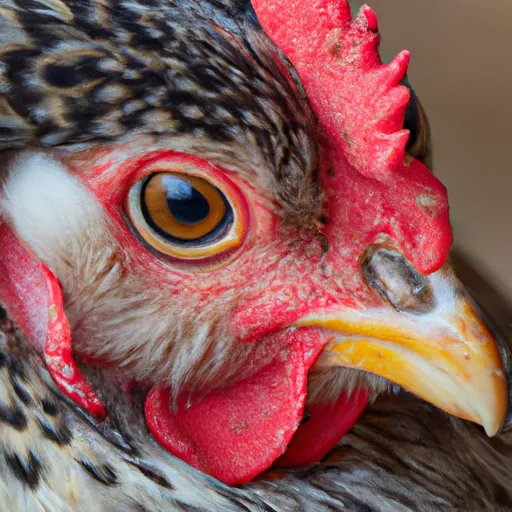The Science of Chicken Vision: What Colors do They See
Chickens have a unique visual system that allows them to see the world in a different way than humans.
In this blog post, we will explore the science behind chicken vision and answer questions such as what colors do they see, how many eyelids they have, and whether or not they have night vision.
Introduction to Chicken Vision
Chickens are known for their exceptional eyesight, which is due to the structure of their eyes and the number of photoreceptor cells they contain.
Unlike human eyes, which only have one fovea (the center of the retina where vision is sharpest), chicken eyes have two foveae, allowing them to have binocular vision.
This means that chickens can perceive depth and distance more accurately than humans.
Additionally, chickens have a wider field of view than humans, which helps them detect movement and potential threats from all angles.
The Structure of a Chicken Eye
A chicken’s eye is divided into three layers: the outer layer (cornea), the middle layer (vitreous humor), and the inner layer (retina).
The cornea is transparent and protects the eye from dust and debris. The vitreous humor provides support for the retina and helps maintain its shape.
Finally, the retina contains the photoreceptor cells that allow chickens to see.
These cells come in different types, each sensitive to specific wavelengths of light.
How Many Eyelids Do Chickens Have?
Chickens have four eyelids instead of just two like humans.
Their upper lid has a membrane called the nictitating membrane, which acts as an additional barrier against dirt and debris.
See also From Hen to Chook: The Evolution of an Aussie Term
When necessary, chickens can also blink with their lower lids, which helps keep their eyes moisturized.

What Colors do Chickens See?
Chickens have dichromatic color vision, meaning they can see two primary colors – blue and yellow.
They cannot distinguish between red and green hues, so objects that appear bright red to us might look darker or even greenish to chickens.
However, chickens have a higher sensitivity to ultraviolet light, which enables them to see patterns on flowers and other objects that are invisible to humans.
Do Chickens have Night Vision?
While chickens don’t have true night vision like some nocturnal animals, they still have adaptations that help them navigate in low-light conditions.
For example, their pupils dilate larger than those of humans, letting in more light.
Additionally, chickens have a reflective layer behind their retinas called the tapetum lucidum, which amplifies available light and improves their overall visibility at night.
Understanding the Science Behind Chicken Vision
Understanding the science behind chicken vision gives us insight into why these birds have such remarkable eyesight.
From their multiple eyelids to their ability to see ultraviolet light, chickens have evolved unique adaptations that make them well-suited for their environment.
By studying chicken vision, scientists hope to gain new insights into animal behavior and physiology, as well as inspire technological advancements in fields such as robotics and artificial intelligence.
